| Coal Drawing Machine, 2012 Installation: machine, coal, steel, epoxy paint and paper banners Variable dimensions Exhibited for the first time in a former coal mine in Belgium, at Manifesta 9 “The Deep of the Modern”, this paper labyrinth generates from the output by a machine which draws with coal. By making an analogy between the mine’s excavated underground and Hell, the drawings are repetitive patterns of magic symbols that can invoke demons but which also are considered to be the predecessors of the electronic circuits that are in use today. The machine functions through the span of the exhibition, it’s output accumulating day after day. The Coal Drawing Machine, an installation, questions the tension between the hand made quality of the traditional coal drawings and the fact of these being industrially produced by a machine. It is a piece that recalls the myth of robots and machines becoming sensible, as for instance in the novel “Do Androids Dream of Electric Sheep?” by Philip K. Dick, later filmed as “Blade Runner”. |
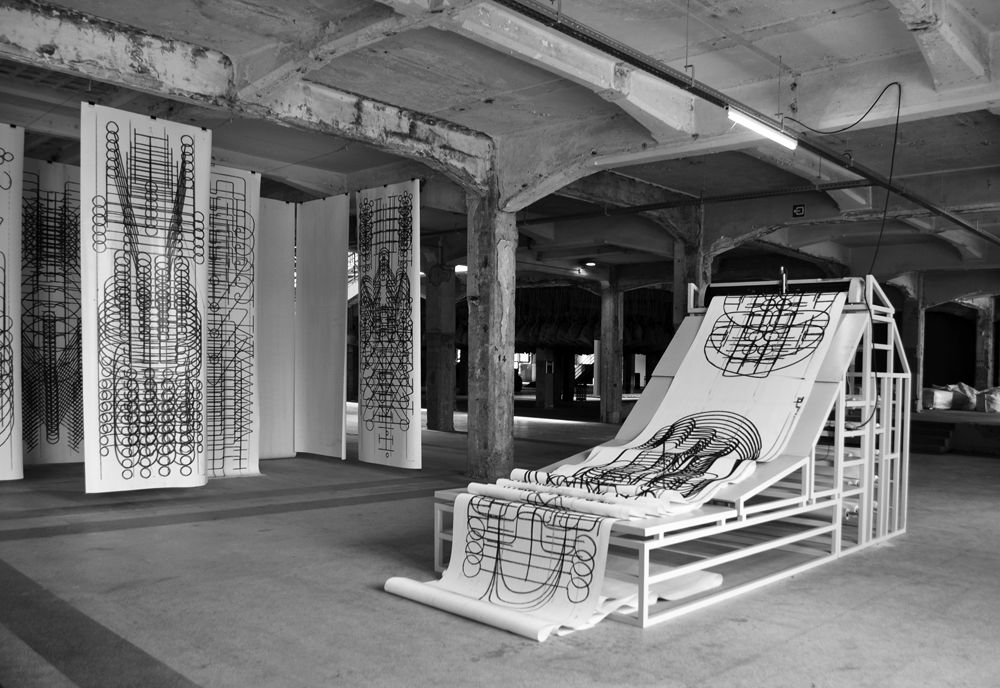
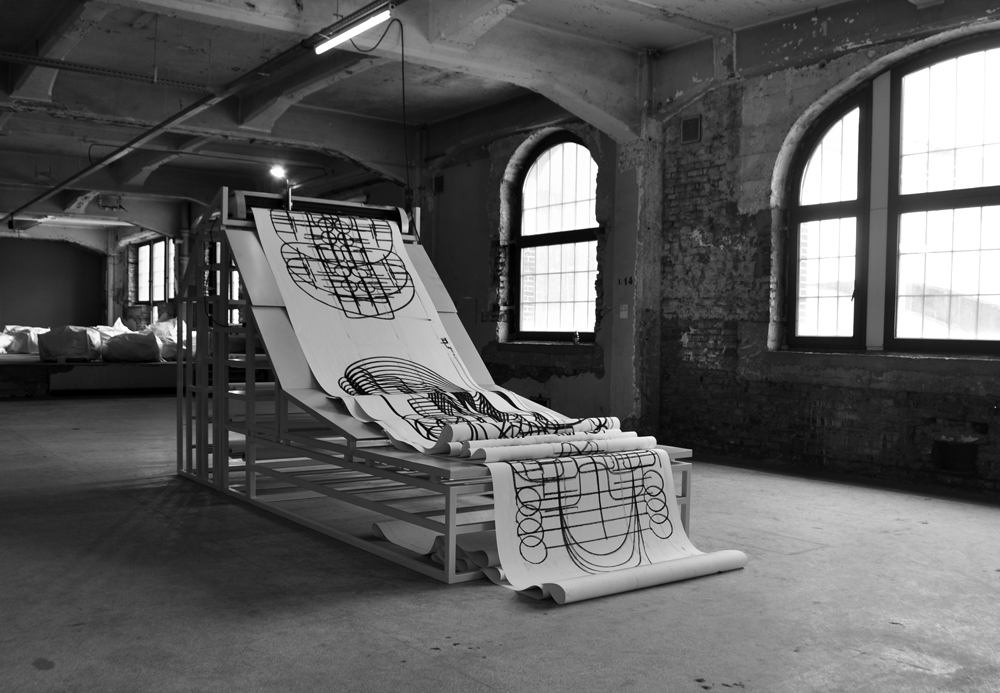
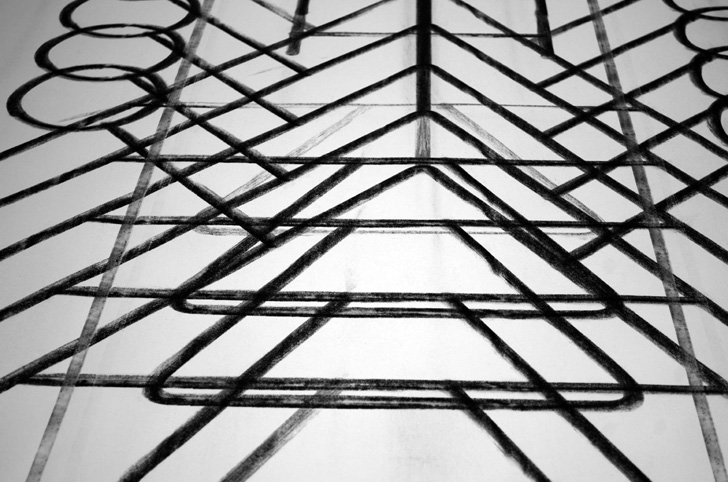
Detail of drawing
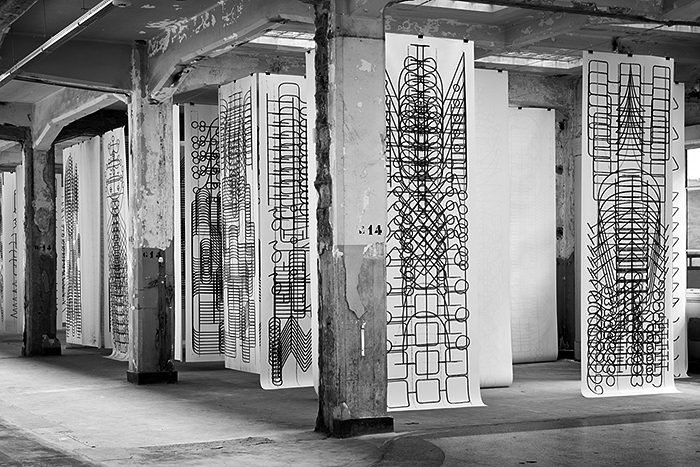
The labyrinth is made with 80 banners that hang from the ceiling, subdividing the space. People can cross through the maze, at its end they can find the Coal Drawing Machine.
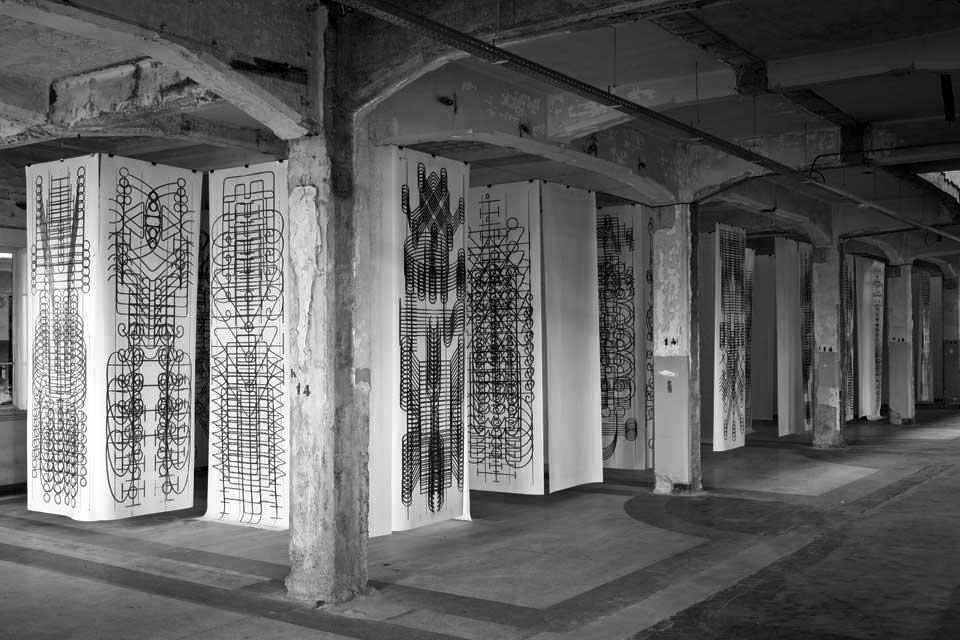
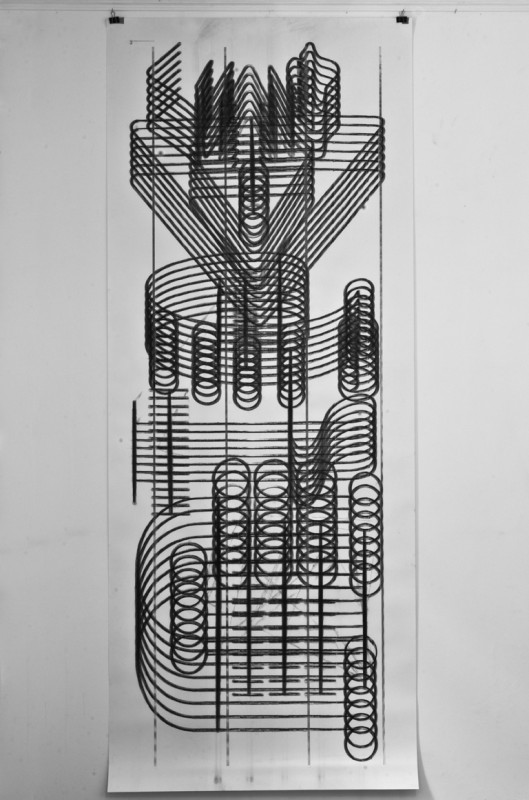
Banner 01, charcoal on paper, 127 x 320 cm
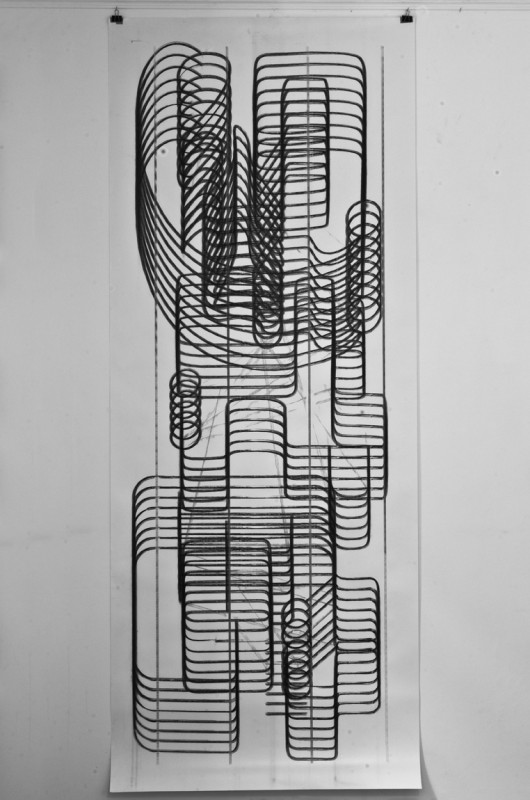
Banner 02, charcoal on paper, 127 x 320 cm

Banner 03, charcoal on paper, 127 x 320 cm
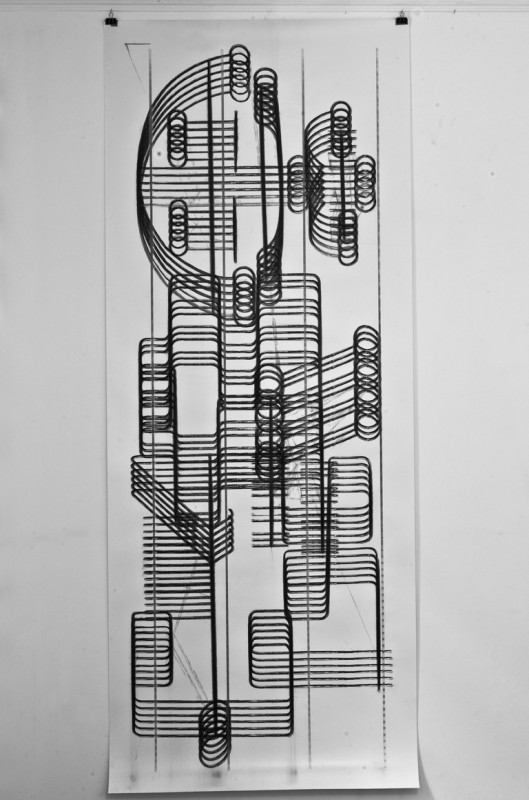
Banner 04, charcoal on paper, 127 x 320 cm
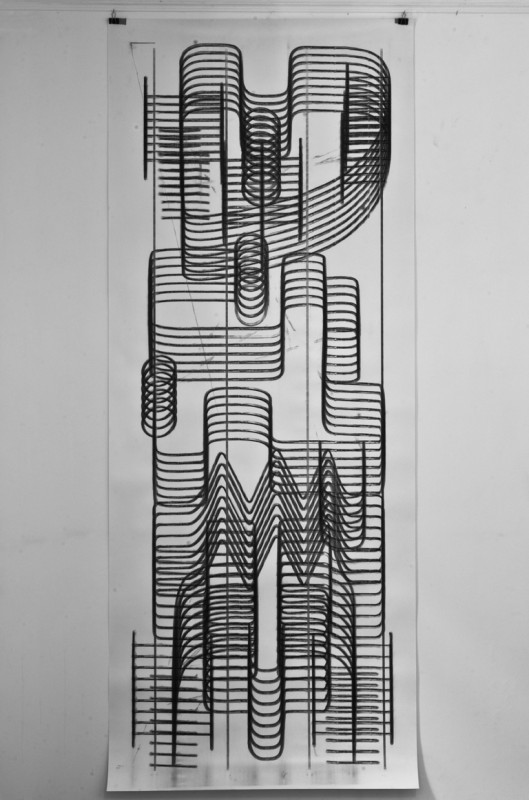
Banner 05, charcoal on paper, 127 x 320 cm

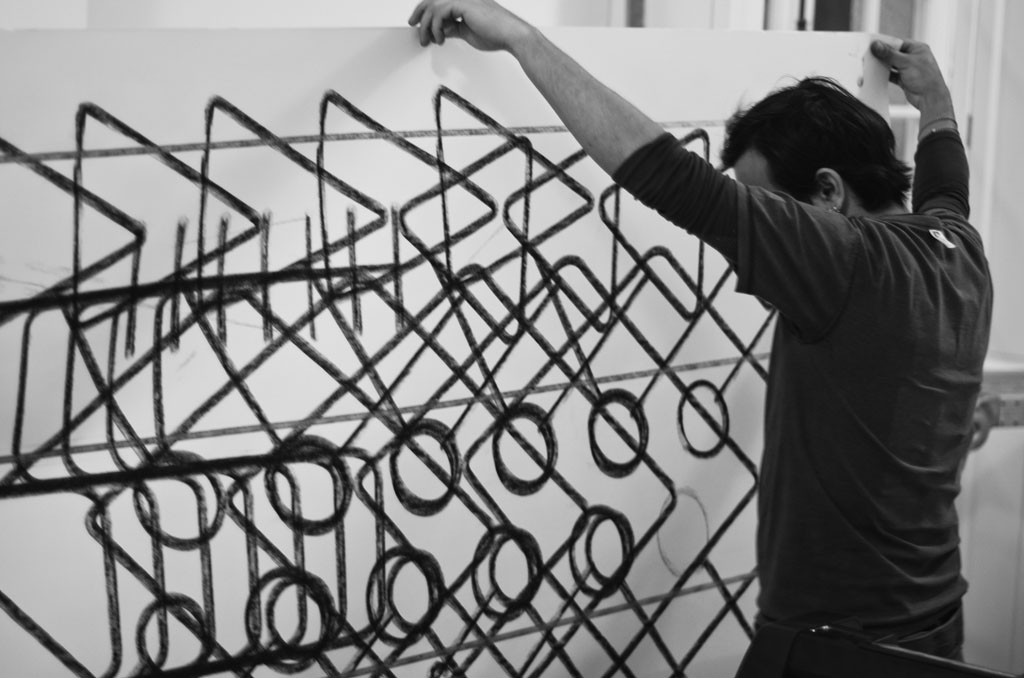
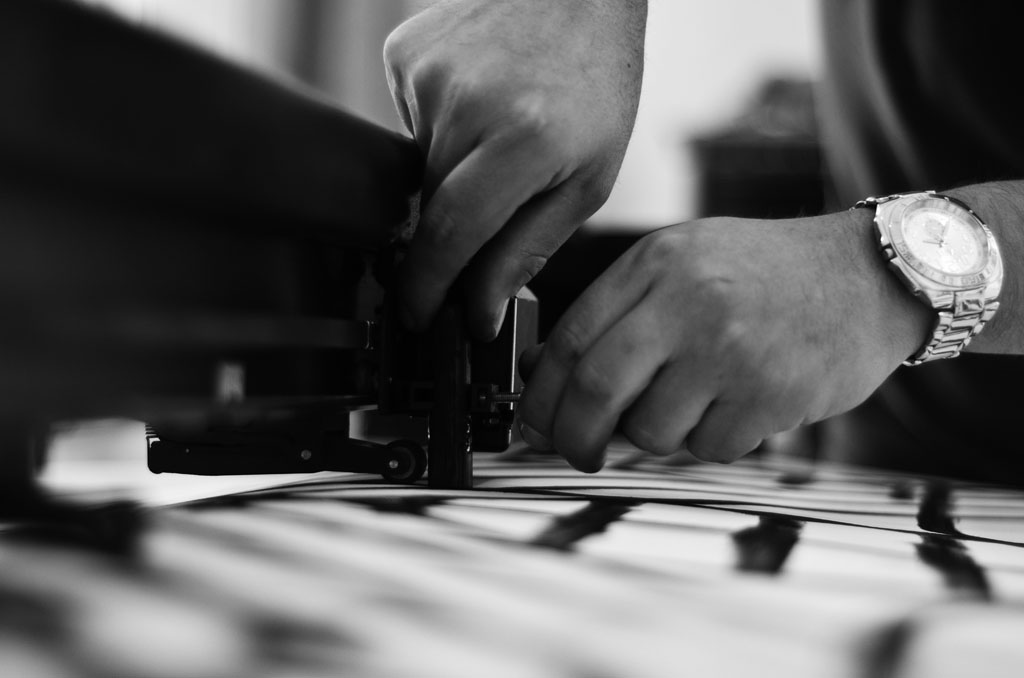
View of the charcoal appliance dispositive

The Ars Goetia is the first section of five included in the anonymous 17th century grimoire “The Lesser Key of Salomon”. There are 72 seals, each representing a demon.
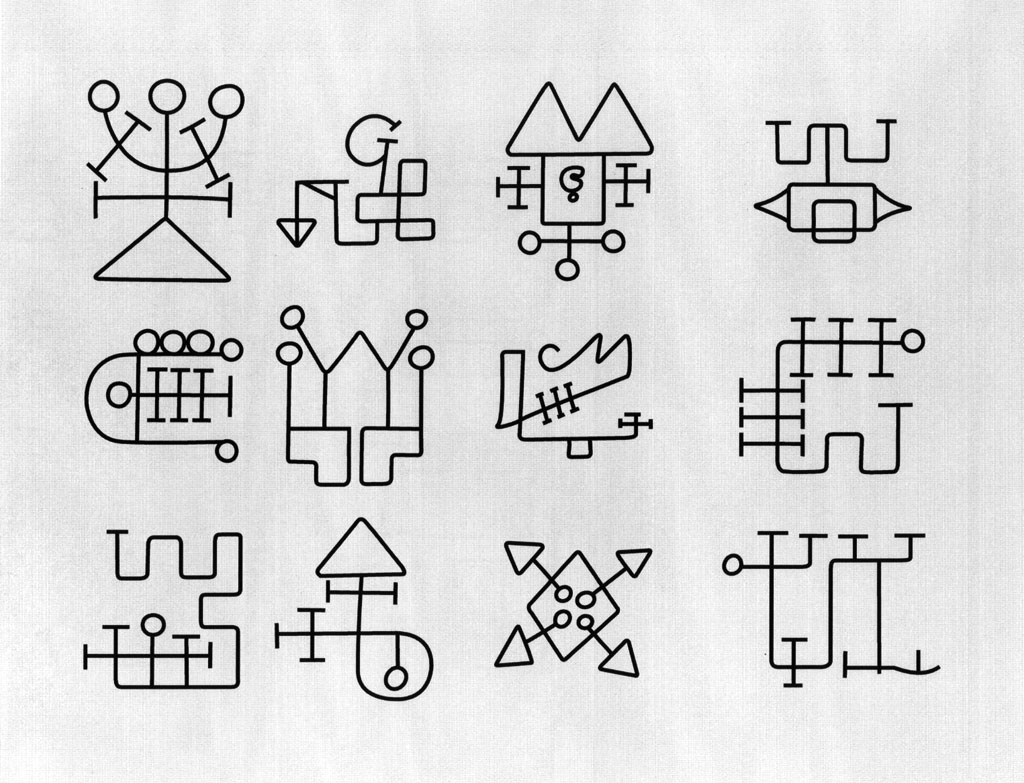
It is believed that the structure of the seals is similar to the one of today’s electronic circuits. As the seals are used for evoking demons, which are aspects of human intelligence, this implies that the seals can be understood as a primitive artificial intelligence language.

Example of a common electronic circuit.

This symbol represents the demon called Buer, who teaches Natural and Moral Philisophy, Logic and the virtues of all herbs and plants. He also heals all infirmities, especially of men, and gives good familiars.

As represented in the book “Dictionnaire Infernal”, published by Collin de Plancy in 1818. The image is an etching by M. Jarrualt after a drawing by Louis Breton. This is a figurative rendering of one of the 72 demons contained in the Ars Goetia.

This work was made possible with the support of Manifesta 9, Yvon Lambert Gallery and Kurimanzutto. The drawing device was developed by Eduardo Berumen from Tres Morenos, the metal structure was produced in Tours by Guillaume Blanc/ Atelier Calder and the banners where made by Edgar Torres Bobadilla, Ivan Martinez and Alejandro Mejia Andrade at Estudio Amorales. Carlos Amorales wishes to thank Cuauhtemoc Medina, Thomas Engelbert and Mieke Mels and as well Axel Velazquez for introducing him to the occult knowledge of the Ars Goetia.